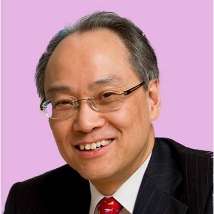First, a disclaimer: I have been an admirer of Long Yu’s conducting skills – not that he can do no wrong, but that he can usually make up for it by delivering tension, energy and contrast in whatever is at hand. Friday evening’s collection of variations with the Hong Kong Philharmonic was a case in point.
Opening works are often rabble-rousing ballyhoos which allow audiences to settle down and pave the way for other more cerebral fare in the rest of the programme. In this sense, Long Yu’s choice of his friend Qigang Chen’s Er Huang, based on a Beijing opera melody “Er huang yuan ban”, went a little against the grain. The composer calls it “a theme and variations with a twist”. Fortunately, its symmetrical structure and clarity of construction made it very approachable.
For a long time after soloist Jean-Yves Thibaudet broke the dead silence with sparse notes suspended in time, the orchestra provided support only in softly murmuring low strings. The cello and clarinet chipped in valiantly to help provide colour, as the piano drifted into waves of fluid chatter and started to assert itself against a chorus of woodwinds. A distinctly Chinese lyrical interlude reminiscent of the Butterfly Concerto gave way to nervous rumbling in the low register of the piano. After moments of tension, the strings and percussion launched into a climax of Mahlerian dimensions. Before long, the turmoil receded, with the piano withdrawing into the near reverie with which it had begun – the sparse notes again suspended in time.
Long Yu’s première of Er Huang in Hong Kong was a resounding success, traversing the full gamut of emotional latitude the work afforded, from contemplative introspection to boisterous clamour. He laid bare the variety of orchestral colours and kept us on tenterhooks with a superb sense of timing.
Gershwin’s Variations on “I got rhythm” lightened the atmosphere with an action-packed roller coaster of episodic flashes of delight. The cat-meowing clarinet opened the floodgates to a series of rapid-fire exchanges between piano and toe-tapping percussion. The pace almost ground to a halt with repeated drawls on strings. The piano brought things back to life falling over itself in cross-eyed virtuosity, at times engaged in a tête-à-tête with parts of the orchestra, and soon falling into the abyss in a crashing crescendo to finish. Soloist and orchestra no doubt got the rhythm right with energy and lucidity aplenty. Had they let their hair down a little more they would have got even closer to Gershwin’s spirit.
The final set of variations on the programme, the “Enigma”, brought Edward Elgar to fame and fortune in London at the end of the 19th century. Long Yu was keen to show that these variations do not begin and end with Nimrod. The variety of pacing and contrasts in orchestral colours played to his strength. The rapid skipping on strings in H.D.S-P (Variation II); the energetic animation in W.M.B (Variation IV); the long-drawn-out romantic poetry of R.P.A (Variation V) and the bull-in-a-china-shop brashness of Troyte (Variation VII) were all impressive displays of perceptive insight.
Every time I listen to Nimrod (Variation IX), best known and most often played among the set, I have to take a deep breath to absorb this vivid depiction of expansive lamentation. Long Yu’s interpretation excelled in its smooth transition from long waves of lyricism to glorious triumph at the end. This enthralling romanticism was reprised in B.G.N (Variation XII), replete with principal cello Richard Bamping’s finesse.
The glorious brass and propulsive rhythm in E.D.U. (Variation XIV) brought the evening of variations to a rousing close in what I thought was a foretaste of Elgar’s Pomp and Circumstance Marches. Above all, it reinforced my view of Long Yu’s formidable talent as a conductor delivering tension, energy and contrast; but, of course, I’m biased.


